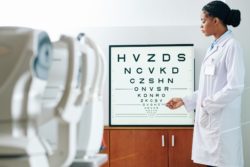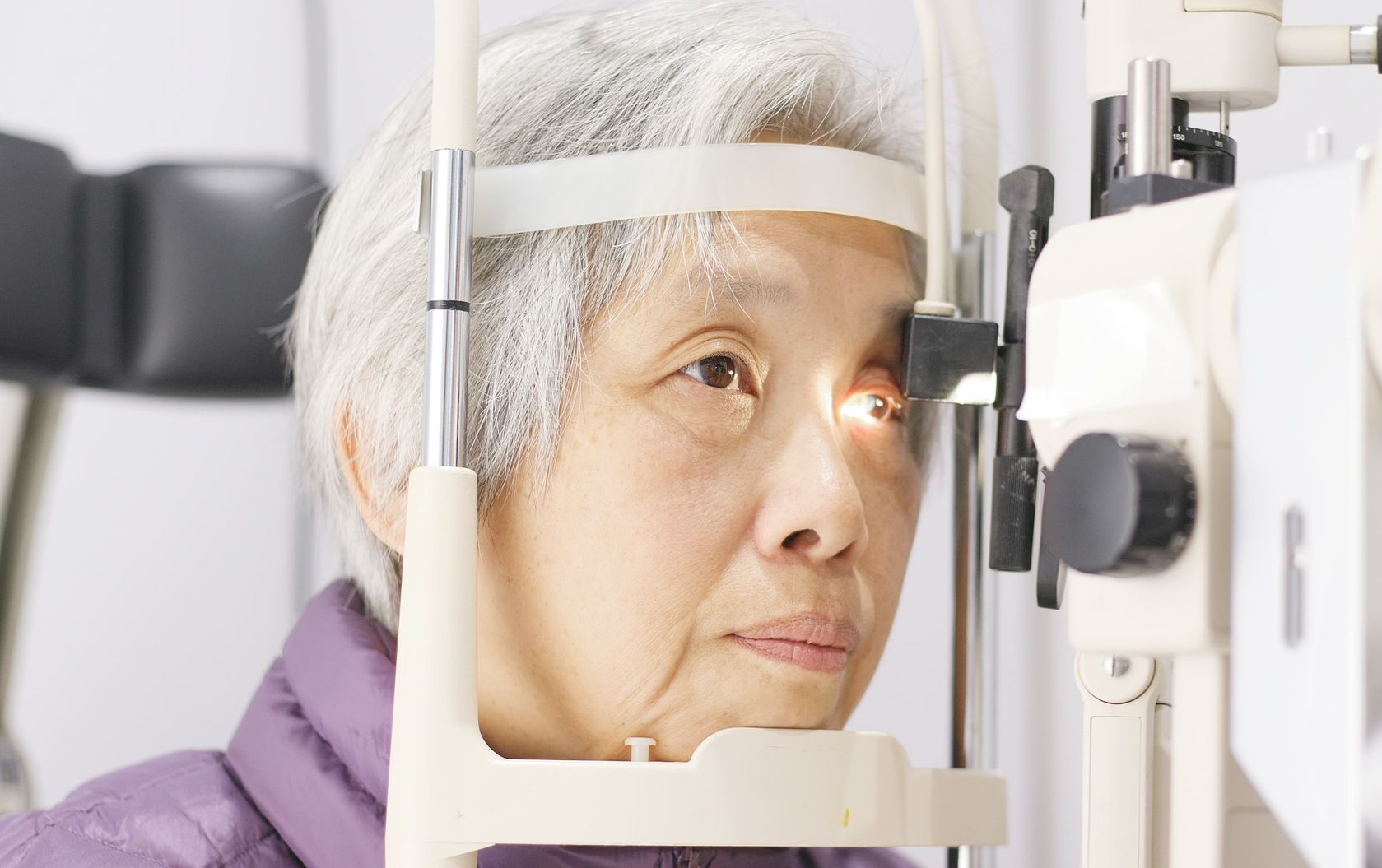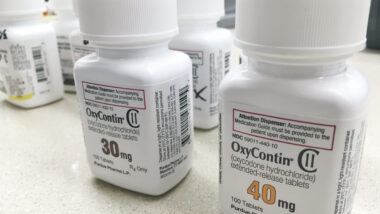Top Class Actions’s website and social media posts use affiliate links. If you make a purchase using such links, we may receive a commission, but it will not result in any additional charges to you. Please review our Affiliate Link Disclosure for more information.
The macula, a small area at the center of the retina at the back of the human eye, is responsible for generating clear, straight-ahead vision. When that part of the retina breaks down, a condition known as age-related macular degeneration sets in.
Macular degeneration is the leading cause of vision loss in people over the age of 50 and while there is no cure, there are things that can be done to reduce the chances of getting it.
Proper nutrition and healthy lifestyle habits play a key role in age-related macular degeneration prevention, medical experts say.
How Does Macular Degeneration Affect Vision?
Macular degeneration is the name for the physical weakening or damage to the macula. The result is the loss of clear forward, central vision, both near and far. A person suffering from this condition may start out being unable to make out fine details in objects in their central field of vision. As the condition worsens, so does the quality and clarity of the vision, affecting the person’s ability to drive, read, use a computer or watch television, according to the American Academy of Ophthalmology.
Peripheral vision is not changed by macular degeneration, though.
Macular Degeneration Types
There are two types of age-related macular degeneration: wet and dry.
Dry age-related macular degeneration is the most common, comprising 80 percent of all cases. It happens when, with age, the macula becomes thinner and spotted with protein deposits called drusen.
There is no formal treatment for dry age-related macular degeneration, the American Academy of Ophthalmology says, and vision loss is typically slow to progress.
Wet age-related macular degeneration is less common but much more serious. It happens when abnormal blood vessels begin to grow under the retina, and sometimes into the delicate macula, which can cause scarring. In some cases, those vessels leak blood or other fluids, which then become trapped between the layers of the back of the eye and cause the macular to warp, according to the Mayo Clinic.
Vision loss with wet age-related macular degeneration can happen much faster than with the dry form of the condition.
Symptoms of wet macular degeneration usually appear suddenly and worsen rapidly, the Mayo Clinic says. Symptoms include visual distortions, such as straight lines appearing bent, reduced central vision in one or both eyes, decreased intensity or brightness of colors, a defined blurry or blind spot in the patient’s field of vision, or an overall haziness.
Macular Degeneration Risk Factors
While an exact cause for age-related macular degeneration has not yet been identified, several factors put patients at a higher risk of developing it, the American Academy of Ophthalmology reports. People who eat a diet high in saturated fat, are overweight or smoke are at an increased risk.
People over the age of 50 who have a family history of macular degeneration are also higher risk, as are those who have heart disease, hypertension, or high cholesterol, the academy says.
The National Institutes of Health has cited studies that suggest a link between a high glycemic diet and macular degeneration. Foods with a high glycemic load, such as white bread, are digested quickly and cause spikes in blood sugar, whereas low-glycemic foods, such as whole-grain bread, take longer to digest. The differences impact the intestinal bacteria called the microbiome, which might be connected to the onset of age-related macular degeneration.
What is Pigmentary Macular Degeneration?

Unfortunately, recent research indicates Elmiron may cause pigmentary maculopathy after years of taking the drug. Pigmentary maculopathy is indicated when the pigmented cells under the retina deteriorate, causing the pigment to float into the macula. As a result, the patient may experience blurriness, distorted vision, and inability to properly adjust from a well-lit area to darkness.
Other patients may find it difficult to read or to clearly see an object up close. One or both eyes may be affected, and the vision changes occur slowly, but are painless.
Some patients have said that even after they have stopped taking Elmiron, their vision continues to deteriorate, sometimes to the point of blindness.
Upon facing several lawsuits regarding Elmiron and its alleged link to pigmentary macular degeneration, drug maker Janssen Pharmaceuticals updated the drug’s warning label to indicate retinal changes are a possible side effect in June.
Several lawsuits allege Janssen knew the risks Elmiron posed to vision, but did not convey the risks to the FDA, the health care community or the public.
Janssen is a subsidiary of Johnson & Johnson. Elmiron received FDA approval in 1995.
Elmiron Macular Degeneration Research
Several studies have been conducted regarding Elmiron’s potential vision damaging side effects. According to 2018 research from the Emory Eye Center, many patients who took Elmiron daily for more than a decade developed eye problems including pigmentary maculopathy. A study from Kaiser Permanente found that approximately 24% of Elmiron users who had taken the drug for at least five years exhibited signs of eye damage.
As there is no cure for interstitial cystitis, many patients who have been diagnosed with the condition take Elmiron every day for years. Unfortunately, the length of time that a person is exposed to the medication may be related to the likelihood of them experiencing vision loss. Patients on a higher dosage of the medication may also be at an increased risk.
Vision loss due to Elmiron exposure is generally not reversible, although patients may cease taking the drug in an attempt to prevent additional damage. However, some studies have indicated that Elmiron eye damage may continue to progress for some time even after the patient has stopped taking the medication. A study published in the Journal of Investigative Ophthalmology & Visual Science in 2020 included data from 12 women whose vision was tested at multiple points after they ceased using Elmiron.
None of the women were found to have regained vision capabilities after stopping the drug, and several of the women were found to have either worsened vision, or new onset of atrophy several months after they had stopped the medication.
Macular Degeneration: Foods to Avoid
Improved diet is considered one of the best macular degeneration prevention efforts for those hoping to avoid the condition, experts say. Specifically, avoiding processed foods full of saturated fats – junk food – is key as they have been linked to “a higher risk of advanced macular degeneration, where vision loss is severe,” according to an article by Healthgrades, a provider of consumer health care information.
Other foods to avoid include oils with high levels of partially hydrogenated fats, such as coconut or palm oil, the Healthgrades article states, as they can have the same effect on the progress of macular degeneration as foods full of saturated fat and sugar.
Eggs should be eaten, but only in moderation. Egg yolks “have one of the highest concentrations of the two major carotenoids—lutein and zeaxanthin—that can protect your macula,” Healthgrades says. But yolks lead to higher cholesterol, which is a risk factor for macular degeneration. One egg a day paired with an otherwise heart-healthy diet is a good approach, according to Healthgrades.
ATTORNEY ADVERTISING
Top Class Actions is a Proud Member of the American Bar Association
LEGAL INFORMATION IS NOT LEGAL ADVICE
Top Class Actions Legal Statement
©2008 – 2024 Top Class Actions® LLC
Various Trademarks held by their respective owners
This website is not intended for viewing or usage by European Union citizens.
Get Help – It’s Free
Join a Free Elmiron Lawsuit Investigation
If you qualify, an attorney will contact you to discuss the details of your potential case at no charge to you.
PLEASE NOTE: If you want to participate in this investigation, it is imperative that you reply to the law firm if they call or email you. Failing to do so may result in you not getting signed up as a client or getting you dropped as a client.
E-mail any problems with this form to:
Questions@TopClassActions.com.
Oops! We could not locate your form.













